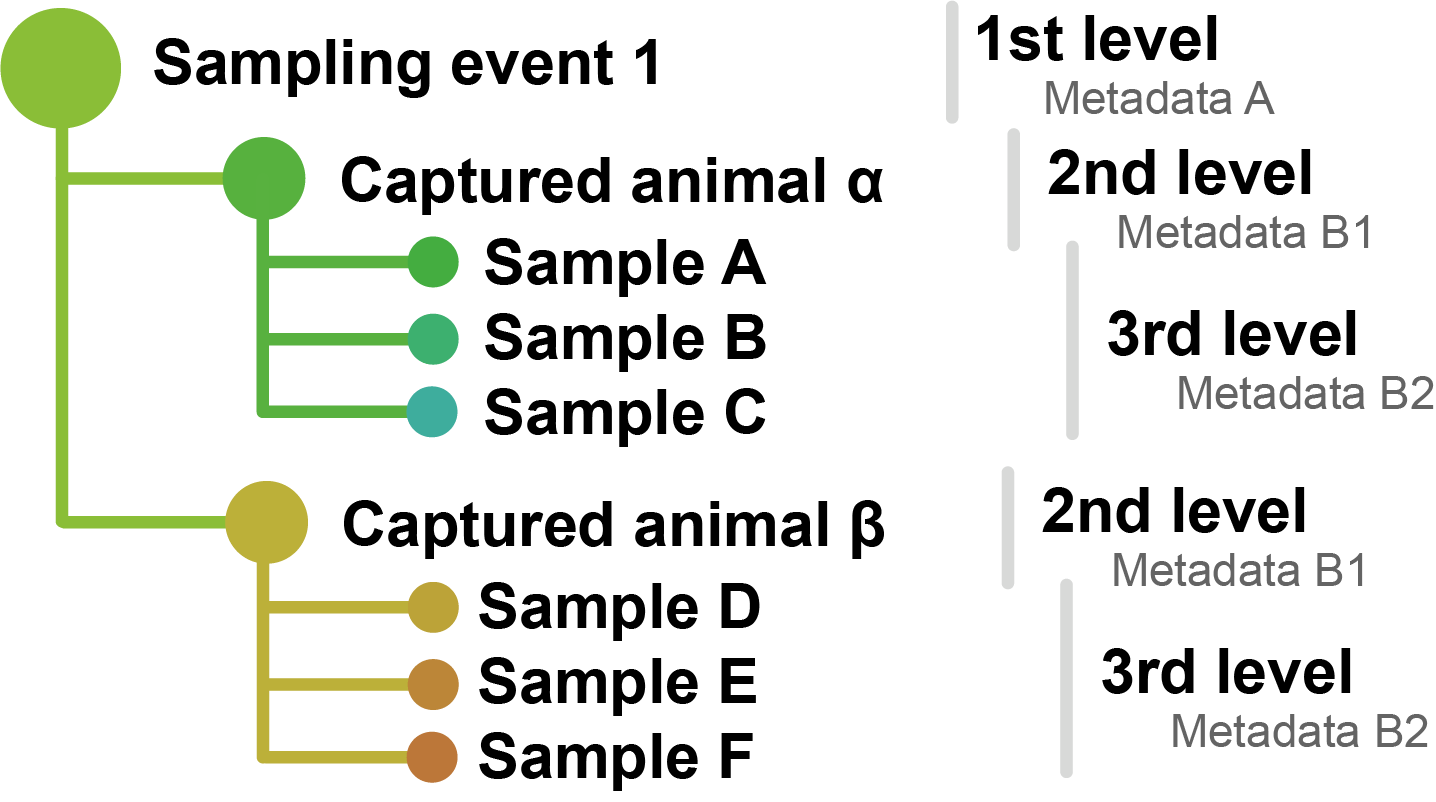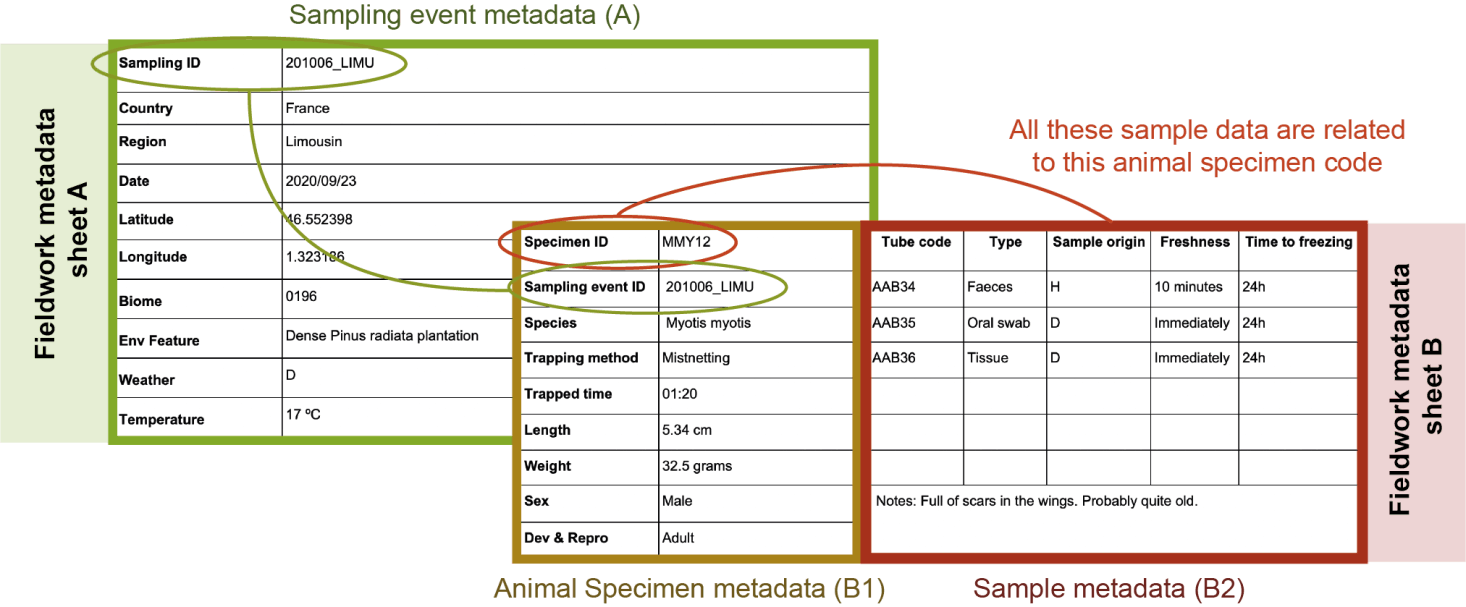
Basic information about the sampling event: day, time, coordinates, method, researchers involved, etc.
External morphological aspect, length and weight of the animal. Standard biometries vary across organisms. Photos are welcome.
Information about the sampling site (e.g. habitat type) and meteorological conditions (e.g. temperature, rain).
Basic information about the sample (e.g number of pellets), and time (hours or days) until freezing.
The EHI metadata is organised at three hierarchical levels: sampling event, animal specimen and sample. The three levels are inter-related through unique identifiers.
LEARN MORE
There are two optional field metadata sheets that enable collecting all the required metadata. The first sheet contains information of the sampling events (A), while the second incorporates information of animal specimens (B1) and samples (B2).
LEARN MORE
The metadata information need to be sent electronically to the EHI management team using the standardised metadata sheets, which contain three tabs with information about sampling events (A), animal specimens (B1) and samples (B2).
LEARN MORE

Each sampling event (unique location and date) must receive a different identifier specified by the sampler*. This identifier enables relating sampled animals to their corresponding sampling events.
Each sample animal specimen must receive a different identifier specified by the sampler*. This identifier enables relating each sample to its corresponding animal specimens' metadata.
Each sample storage tube contains a 3-letter and 2-number code (e.g. ABC01) that needs to be related to an animal specimen identifier.
A vertical A4-size document designed to collect sampling event information of 3 samplign events.
A horizontal A4-size document designed to collect specimen information of three animals and up to six samples per sampled specimen.
